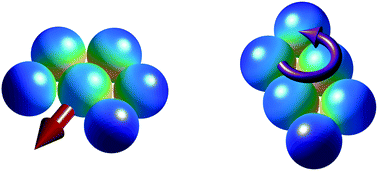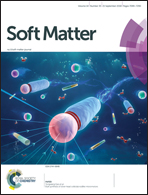Clustering-induced self-propulsion of isotropic autophoretic particles
Abstract
Self-diffusiophoretic particles exploit local concentration gradients of a solute species in order to self-propel at the micron scale. While an isolated chemically- and geometrically-isotropic particle cannot swim, we show that it can achieve self-propulsion through interactions with other individually-non-motile particles by forming geometrically-anisotropic clusters via phoretic and hydrodynamic interactions. This result identifies a new route to symmetry-breaking for the concentration field and to self-propulsion, that is not based on an anisotropic design, but on the collective dynamics of identical and homogeneous active particles. Using full numerical simulations as well as theoretical modelling of the clustering process, the statistics of the propulsion properties are obtained for arbitrary initial arrangement of the particles. The robustness of these results to thermal noise, and more generally the effect of Brownian motion of the particles, is also discussed.



 Please wait while we load your content...
Please wait while we load your content...